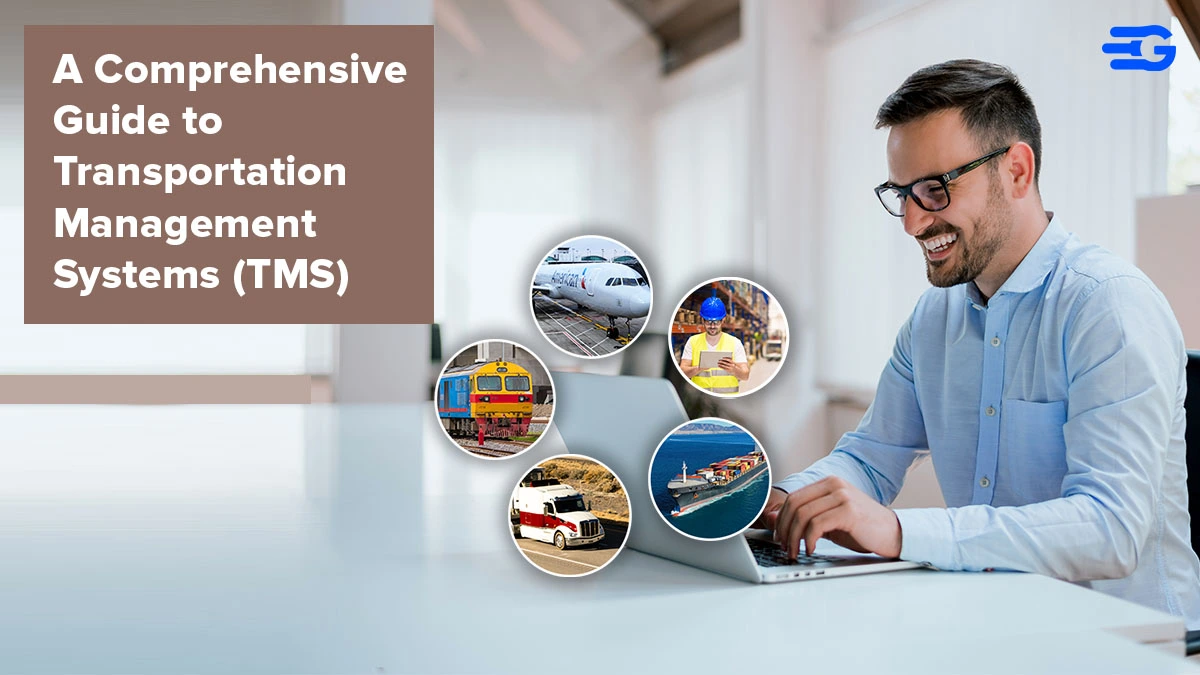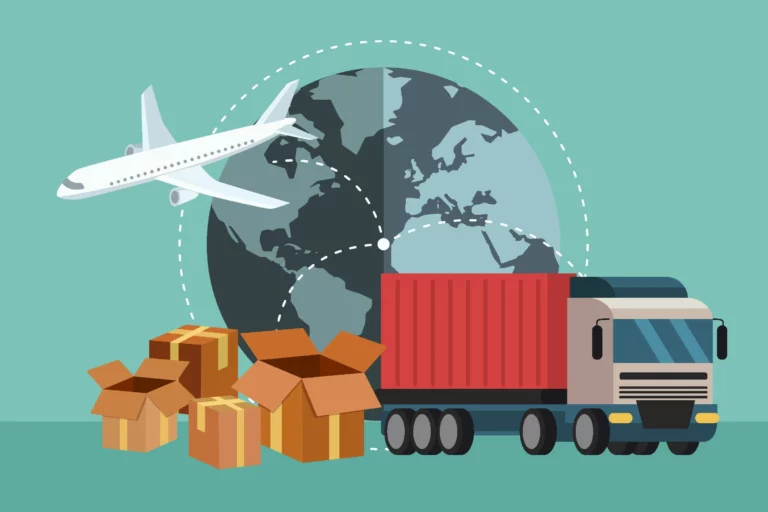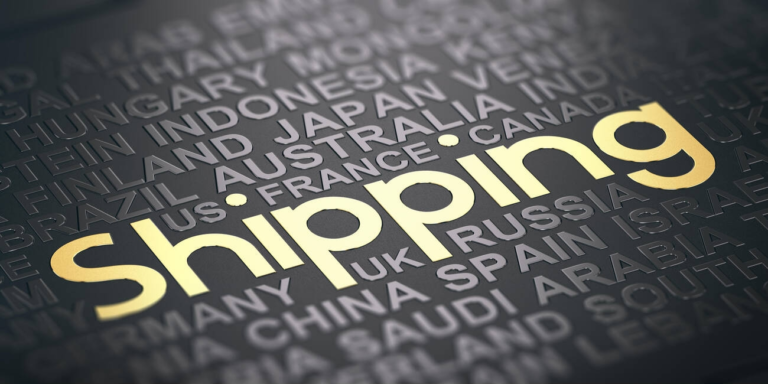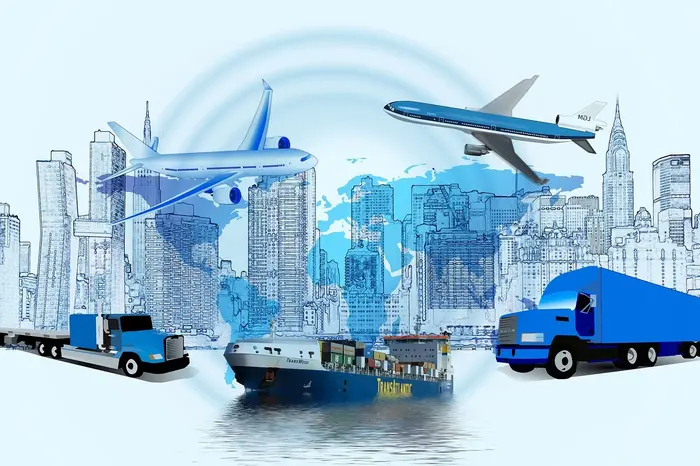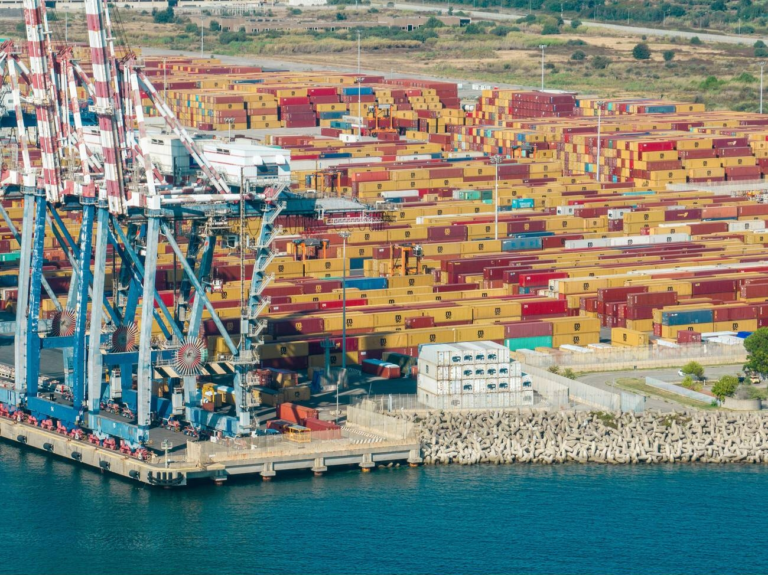A Comprehensive Guide to Transportation Management Systems (TMS)
Table of Contents
Efficient logistics are critical for businesses to succeed in today’s fast-paced supply chain environment. Transportation Management Systems (TMS) have emerged as vital tools for streamlining logistics operations. This guide will explore what TMS systems are, their features, benefits, challenges, and more. By the end, you’ll know everything about TMS Systems and how to choose the right one for your business needs.
What is Transportation Management Systems (TMS)?
A Transportation Management System (TMS) is a software solution that helps businesses streamline the movement of goods. It covers every aspect of the shipping process, from planning routes to tracking deliveries in real time. A TMS automates tasks like scheduling shipments, managing carrier rates, and generating shipping documentation, saving businesses time and reducing human error.
TMS systems are designed to optimize logistics by analyzing data to identify cost-effective routes and minimize delays. They integrate with other systems like Warehouse Management Systems (WMS) and Enterprise Resource Planning (ERP) tools to provide a centralized platform for logistics management. Whether managing a single shipment or handling complex global operations, a TMS ensures efficiency, cost savings, and timely delivery.
For businesses of all sizes, a TMS is more than just a tool; it’s a vital component for maintaining a competitive edge in today’s fast-paced supply chain environment.
Key Features of Transportation Management Systems
Modern TMS systems come equipped with features that make managing logistics more efficient. Here are some key features to look out for:
- Route Optimization: Suggests the fastest and most cost-effective shipping routes.
- Freight Management: Assists in comparing carrier rates and selecting the best options.
- Shipment Tracking: Provides real-time updates on the location and status of shipments.
- Load Planning: Optimizes how goods are loaded to reduce transportation costs.
- Analytics and Reporting: Offers insights to improve decision-making and reduce expenses.
- Carrier Integration: Connects with multiple carriers to streamline communication.
- Automated Documentation: Simplifies tasks like generating bills of lading and customs forms.
These features save time, cut costs, and ensure better visibility across the supply chain.
Benefits of Transportation Management Systems
Implementing a TMS brings numerous benefits that improve logistics efficiency and reduce operational costs:
- Cost Savings: A TMS automates repetitive tasks, reducing the need for manual intervention. This not only saves on labor costs but also minimizes costly errors in freight planning, invoicing, and documentation.
- Enhanced Efficiency: From shipment planning to execution, a TMS streamlines logistics processes. By automating workflows, businesses can handle more shipments in less time, boosting overall productivity.
- Real-Time Visibility: TMS systems provide live tracking of shipments, offering insights into delivery status, potential delays, and route optimization. This transparency helps businesses make data-driven decisions.
- Improved Customer Satisfaction: Reliable and faster deliveries lead to happier customers. By reducing delays and improving shipment accuracy, a TMS enhances the overall customer experience.
- Scalability for Growth: A TMS grows with your business, adapting to increased shipment volumes and complexities as operations expand. It ensures that logistics can scale seamlessly without disruption.
- Regulatory Compliance: Many TMS platforms include features for managing international shipping regulations, customs documentation, and trade compliance, helping businesses avoid legal and financial penalties.
A TMS is more than a logistics tool; it’s a strategic asset that enhances operations, reduces costs, and strengthens customer relationships.
Who Uses TMS Systems?
A wide range of industries and stakeholders rely on TMS systems to manage their logistics.
Industries Benefiting from TMS
Retail:
Retailers depend on TMS systems to handle complex shipping requirements. These tools ensure products reach stores and customers quickly while keeping costs low.
Manufacturing:
Manufacturers use TMS to move raw materials and finished goods efficiently. TMS systems help optimize supply chains, ensuring timely production and delivery.
Third-Party Logistics (3PL) Providers:
3PL providers use TMS to manage shipments for multiple clients. These systems help them coordinate carrier relationships and improve service quality.
Key Stakeholders
Shippers:
Shippers use TMS to plan, book, and manage shipments. The system helps them control costs and improve delivery accuracy.
Carriers:
Carriers benefit from TMS systems by accessing route optimization tools and ensuring better fleet management.
Freight Brokers:
Freight brokers rely on TMS to connect shippers with carriers, negotiate rates, and monitor shipping performance.
How Does a TMS Work?
A TMS collects and processes logistics data to improve transportation planning and execution. It starts with order creation, where shippers input details like destination, weight, and delivery dates. The system then analyzes options, selects the best carrier, and plans routes.
Once the shipment is dispatched, the TMS tracks its progress in real-time. It also generates reports on delivery performance, cost analysis, and operational efficiency. This ensures businesses can adjust their strategies for future shipments.
Challenges in Implementing a TMS
Implementing a Transportation Management System (TMS) can streamline logistics, but the process isn’t without challenges. Below are the most common issues businesses face:
- High Initial Costs: Many TMS solutions come with steep setup fees, including software licensing, customization, and hardware investments. For small or medium businesses, this can strain budgets.
- Integration Difficulties: A TMS must seamlessly connect with existing systems like ERP, WMS, or CRM platforms. Without proper planning, integration can become time-consuming and expensive.
- Employee Training: Adopting a new system requires employees to learn its features and workflows. This often means allocating time and resources for training, which can temporarily slow down operations.
- Customization Limitations: Not all TMS platforms can accommodate every business’s unique needs. Some systems may lack the flexibility needed for specific workflows or industry requirements.
- Data Migration Issues: Migrating existing logistics data to a TMS can be complex. Errors in data transfer may lead to discrepancies or delays, impacting operations.
- Ongoing Maintenance Costs: Post-implementation, businesses may face ongoing costs for system upgrades, troubleshooting, and technical support, which can add up over time.
How to Overcome These Challenges
- Evaluate Costs Carefully: Choose a TMS that fits your budget without compromising essential features. Consider cloud-based options for lower upfront costs.
- Plan Integration Thoroughly: Work with IT experts or the TMS provider to ensure smooth integration with current systems.
- Provide Adequate Training: Set aside time and resources to train employees. Many providers offer training modules to help teams get up to speed.
- Choose a Flexible System: Select a TMS that allows for customization or has industry-specific solutions.
- Test Data Migration: Run data migration tests to identify and fix errors before going live.
- Budget for Maintenance: Include ongoing costs in your financial planning to avoid surprises.
Addressing these challenges early ensures a smoother implementation process and helps businesses maximize the value of their TMS investment.
Top TMS Providers to Consider
Choosing the right Transportation Management System (TMS) is critical for improving logistics efficiency. Below is a refined look at some of the top TMS providers, highlighting their features, strengths, and suitability for different businesses:
GoComet
GoComet is an AI-powered cloud-based TMS that focuses on reducing freight costs and enhancing shipment visibility. It provides tools like freight rate benchmarking, real-time tracking, and automated workflows. The platform is ideal for small and mid-sized businesses aiming to simplify logistics while saving money.
Manhattan Associates
Manhattan Associates offers advanced solutions for handling intricate supply chains. Its features include AI-driven route optimization, real-time notifications, and seamless warehouse integration. This platform is well-suited for large enterprises needing scalability and deep customization. Yet, its high cost and steep learning curve can deter smaller businesses or those new to TMS.
Blue Yonder
Blue Yonder focuses on automation and predictive analytics to prevent disruptions and enhance operational efficiency. Its multi-modal transport support and automated shipment planning make it a strong choice for enterprises managing large-scale logistics. While its advanced features are impressive, the platform’s complexity and premium pricing may not appeal to smaller companies.
Oracle Transportation Management Cloud
Oracle TMS offers comprehensive tools for both domestic and international logistics. Features like global trade compliance, carrier rate optimization, and ERP integration make it an excellent choice for businesses dealing with complex supply chains. However, its high cost and integration challenges might not suit smaller companies or those without existing Oracle systems.
Alpega TMS
Alpega TMS provides a flexible platform for freight management and carrier collaboration. Its key strengths include centralized tendering tools, real-time delivery updates, and sustainability tracking. This TMS is ideal for mid-sized businesses seeking affordability and ease of use, but it may lack the advanced functionality required by very large organizations.
CloudTMS
CloudTMS is a simple, affordable option designed for small to mid-sized businesses. It offers basic tools for shipment tracking, planning, and carrier rate management. The cloud-based platform ensures remote accessibility, making it a great starting point for smaller teams. However, it lacks the advanced features required for managing large or complex logistics networks.
How to Choose the Right TMS for Your Business
Selecting the best TMS involves careful consideration. Follow these steps:
- Identify Your Needs: Determine which features are most important for your operations.
- Set a Budget: Understand the costs, including licensing, setup, and maintenance.
- Evaluate Scalability: Ensure the TMS can grow with your business.
- Check Integration Options: Confirm compatibility with your existing software.
- Read Reviews: Look for feedback from other users in your industry.
- Request a Demo: Test the system to see if it meets your expectations.
Choosing the right TMS requires aligning the platform’s capabilities with your specific goals.
Future of Transportation Management Systems
The TMS landscape is rapidly evolving with the integration of advanced technologies. Artificial Intelligence (AI) and Machine Learning (ML) are playing a larger role in predictive analytics and route optimization. Cloud-based platforms are becoming the norm, offering greater flexibility and accessibility.
Sustainability is another growing focus. Many TMS systems now include features to track and reduce carbon emissions. Businesses are increasingly looking for solutions that balance efficiency with environmental responsibility.
The future of TMS will likely center on smarter, greener, and more connected logistics solutions.
Final Thoughts
A Transportation Management System (TMS) is a powerful tool that simplifies logistics, reduces costs, and improves operational efficiency. By understanding its features, benefits, and potential challenges, businesses can make informed decisions and choose the right TMS for their needs. Whether you’re a small company or a large enterprise, investing in the right TMS can significantly enhance your supply chain performance. With proper planning and execution, a TMS can transform the way you manage transportation, saving time and resources while driving growth.
FAQs
1. What is a Transportation Management System used for?
A TMS helps businesses plan, execute, and optimize transportation operations. It ensures shipments are delivered on time and at the lowest cost.
2. Can small businesses use a TMS?
Yes. Many TMS systems are designed for small and mid-sized businesses, offering affordable and scalable options.
3. How much does a TMS cost?
The cost varies depending on the provider and features. Options range from basic systems for small businesses to advanced platforms for large enterprises.
4. Is a TMS necessary for e-commerce?
E-commerce businesses benefit greatly from TMS systems. These platforms streamline order fulfillment, manage carriers, and ensure timely delivery.
5. Can a TMS help with international shipping?
Yes. Many TMS systems support global shipping operations, helping businesses navigate customs, documentation, and cross-border logistics.
As a reward for making it to the end of this blog, we will let you in on a little secret that will unlock your supply chain’s full potential – click here to know more!
